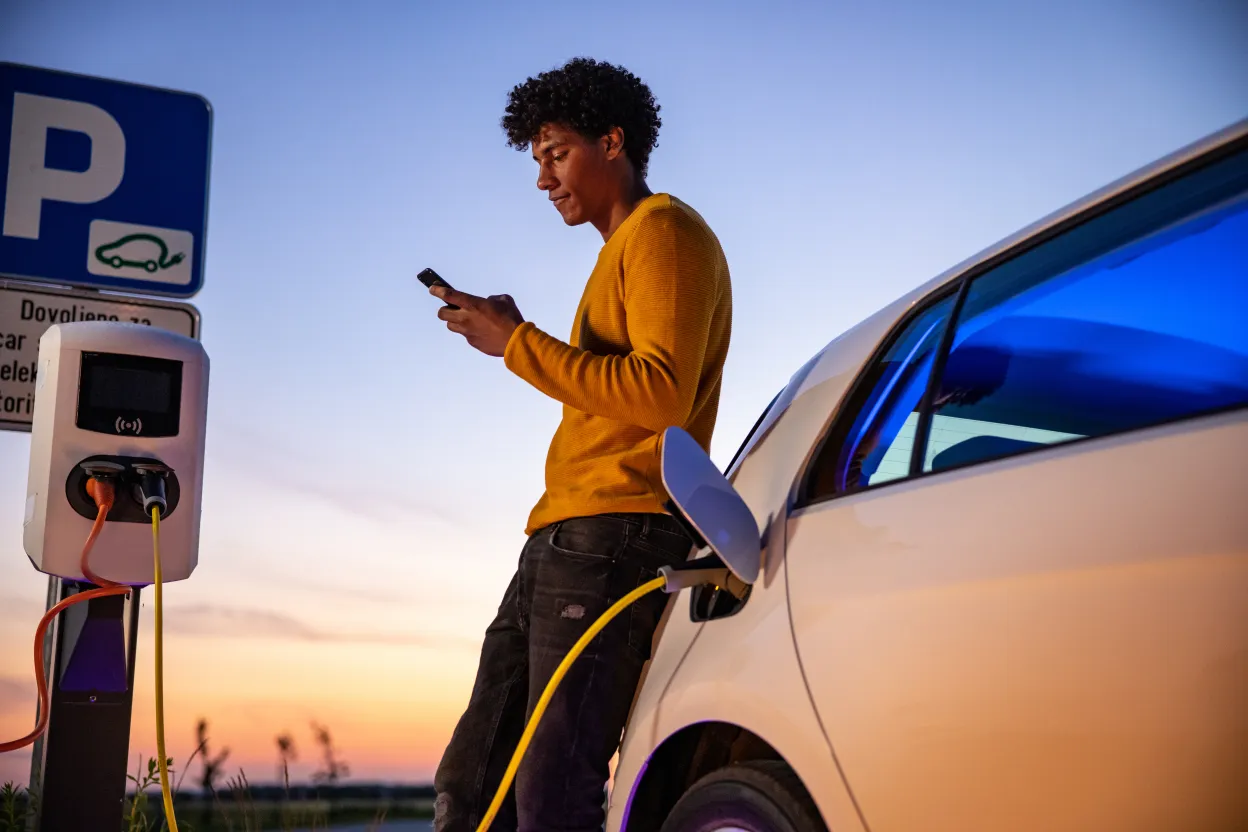In the previous two blogs in our series on electric vehicle (EV) charging, we shared why it’s essential for EV charging stations to accept payments and the partnerships that make public EV charging possible. In this third blog, we posit what the future of EV charging could hold.
It’s clear that the “future” of EV charging is approaching quickly. The number of public EV charging stations around the world grew by 37% in 2021 to bring the total number of charge points to 1.8 million worldwide. The U.S., which lags behind other regions of the world in public EV charging infrastructure, is now on the brink of widespread implementation. The 2021 Infrastructure Investment and Jobs Act includes $7.5 billion in funding for 500,000 more public EV charging stations by 2030. And the timing appears right: EV sales in the U.S. increased by 65% in 2022.
To U.S. consumers, whether they drive EVs or not, charging stations are becoming familiar fixtures. These stations, which stand alone or are built into structures, include necessary cables, connectors, touchscreens, and displays to enable drivers to plug and charge. However, expect the future of EV charging to bring changes as more consumers purchase EVs, rely on them for longer trips, and encounter various challenges.
The Future of EV Charging Will Be All About Timing
When demand increases, speed and throughput will become more of a concern as drivers line up to charge. The rate of EV charging depends on several factors, such as how much charge the battery currently has, battery sizes, and battery age. However, in general, a level 3 DC fast charger can add 200 miles of range in about 30 minutes, and a level 2 charger, such as those found in parking garages or workplace parking lots, takes about an hour to add 25 miles of range. The future of EV charging will bring more public chargers and processes optimized to allow drivers to get back on the road as quickly as possible and keep queues short.
The future of EV charging will certainly also usher in new etiquette rules, i.e., don’t park in a charging space when you aren’t charging, promptly move your vehicle when charging is complete, and put the connector back on the station to prevent damage. The future may even include tech solutions that help to enforce procedures to provide good experiences for everyone.
EV Charging Isn’t Just a Fair-Weather Activity
The future of EV charging will also ensure that drivers can charge in any weather conditions. Weather can impact charging time. A Consumer Reports study found that range can decrease by up to 25% at -10 degrees F. Basically, batteries work because of an electrochemical reaction that is slower in colder temperatures. Additionally, charging is less effective when temperatures dip. The Idaho National Laboratory study determined that an EV battery added 36% less energy at 32 degrees compared to charging for the same amount of time at 77 degrees. Innovators will address this challenge to ensure that charging is efficient and all components, from cables, connectors, payment devices, and displays, are rugged enough to keep performing in weather extremes and drivers aren’t stranded in cold weather.
Drivers Want Safe. Comfortable Use of Their Time
Now, it’s common to see EV charging stations in a corner of a parking lot with easy electrical access, but not necessarily close to buildings, restrooms, amenities, or even lighting. Drivers that must charge their vehicles away from home will need a safe place to do so where they have access to accommodations they need. Planners and EV charging station providers will choose future locations with this in mind.
Businesses Seize the Opportunity for Digital Advertising
Charging takes time, and the display on an EV charging station is an opportunity to engage drivers. Charging stations with digital displays capable of supporting multimedia ads can entertain, inform, or engage while drivers charge their vehicles.
The Detroit Free Press reports that locating advertising-supported chargers in highly visible places near shopping, dining, or entertainment is a “triple win.” Customers can charge at lower fees, advertisers get exposure, and businesses can enhance customer experiences and increase traffic with a charger available to their customers.
Regulators Focus on EV Charging
Now, the focus of government leaders is on ensuring that EV charging infrastructure can meet demand. But the future of EV charging will include regulating this activity and protecting consumers. For example, The Federal Highway Administration recently established a rule for minimum standards for interoperability of EV charging infrastructure, traffic control devices, network connectivity, locations, pricing, real-time availability, and accessibility.
As the future of EV charging unfolds, charging station providers will need to adapt and innovate continually to ensure that their solutions comply as rules and laws are enacted.
Stay Tuned
While there’s no way to know for sure how the future of EV charging will take shape, infrastructure will certainly grow, planners and providers must find ways to overcome challenges to make charging safe, efficient, and accessible, and businesses will explore ways to take advantage of the opportunity to engage consumers while they charge.
Ingenico is working with innovators to make payments simple for drivers, forming partnerships to optimize EV charging station functionality, and networking to stay informed of trends in the industry. Want a partnership that will help you stay on the cutting edge? Contact us.











